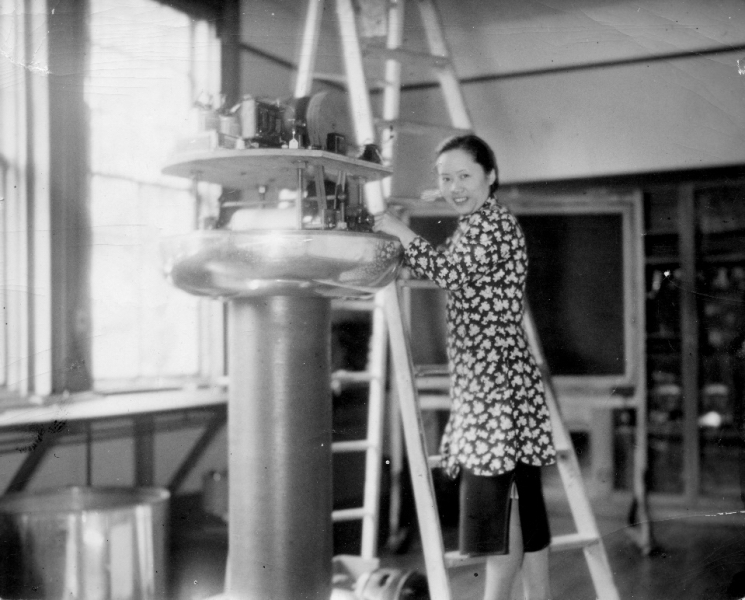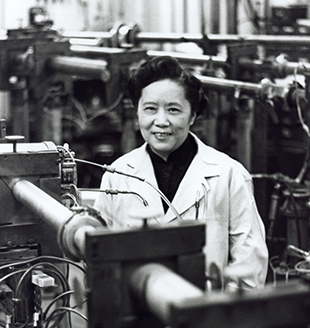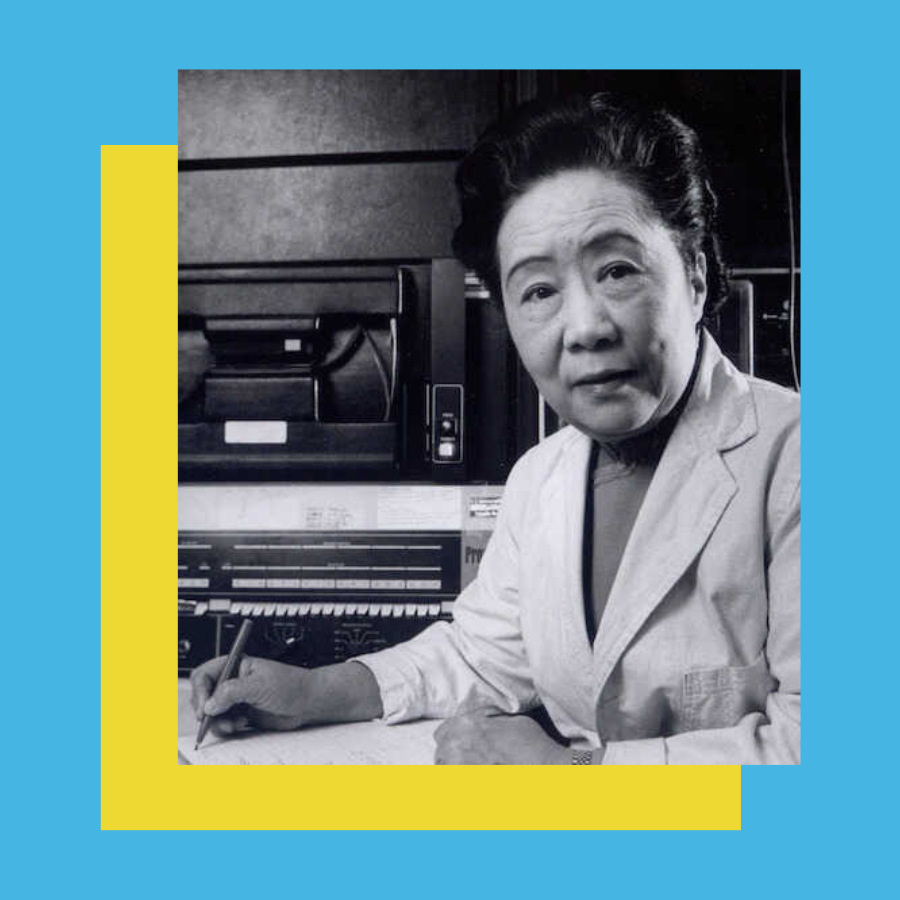This post may include affiliate links, which means we make a small commission on any sales. This commission helps Feminist Book Club pay our contributors, so thanks for supporting small, independent media!
“Reclaiming the Canon” is a series of posts that aims to bring attention to historical women who are often excluded from the narrative of their field — whether in literature, music, science, or other areas. Each post features a woman whose name we feel everyone should know. Readers are strongly encouraged to explore further resources, spend quality time with primary sources when possible, and self-educate — because re-claiming the canon starts with you!
Who Was Chien-Shiung Wu?
Chien-Shiung Wu (1912-1997) was a Chinese-American physicist who was important in the fields of nuclear and particle physics. An authority on beta decay, she worked on the Manhattan Project and conducted the Wu Experiment, which proved that parity is not conserved. This was an unexpected finding that contradicted an accepted law in nuclear physics. The findings of the Wu Experiment led to two male physicists, who had enlisted Wu’s help, winning the Nobel Prize in Physics in 1957. Wu did not receive this recognition, due to gender discrimination.
Wu was the first female faculty member in the history of Princeton University’s physics department, where she taught navy officers. She later became the first female physics professor at Columbia University. She was known as the “First Lady of Physics” and the “Queen of Nuclear Research.”
Her Life
Chien-Shiung Wu was born in the town of Liuhe in China. She was particularly close to her engineer father, who encouraged her developing intellect. Both of her parents believed that girls should receive an education equal to boys, which was not a popular opinion at the time. Wu’s father was an activist during the Chinese Revolution of 1911, and he led a local militia to modernize their town. He encouraged women’s equality and founded an elementary school for girls called Ming De School. This is where his young daughter attended elementary school.
When she was 10, Wu left Liuhe to study at boarding school, where she grew interested in scientific subjects. She went on to study mathematics and physics at the National Central University in Nanjing. Taking after her father, Wu also became active in student politics. She led protests that called on the Chinese government to take a firmer position against Japan, as tensions between the two nations were increasing.

Wu worked as a researcher at the Institute of Physics of the Academia Sinica. Her supervisor had earned her PhD at the University of Michigan in the United States, and she encouraged Wu to do the same. Wu was accepted, and she left for the United States in 1936. Unfortunately, she was so shocked by the sexism she encountered (women at the University of Michigan were not even allowed to use the front entrance!) that she decided not to stay in Michigan. She opted to attend the more liberal University of California, Berkeley instead. She completed her PhD in 1940, with J. Robert Oppenheimer on her thesis committee.
In 1944, Wu joined the Manhattan Project, working with a group at Columbia University to develop radiation detection instrumentation. Later on when a nuclear reactor had an unexpected problem, she was brought on to assist because her thesis paper had the solution to the issue. It was after this that she conducted the Wu Experiment at Columbia. This experiment led to the groundbreaking discovery that won her colleagues (but not Wu, despite the experiment being named for her) the Nobel Prize.
Due to the conflicts of World War II and the Chinese Civil War, Wu was unable to return home for many years, and she missed China very deeply. She became a United States citizen in 1954. Because of the United States’s strict restrictions on traveling to communist countries, Wu was not allowed to travel to China to attend the funerals of her family members, including her father, who died in the following years. She did, however, travel often to China and Taiwan after 1965. When she passed away at the age of 84, Wu’s ashes were buried at Ming De School—the school for girls founded by her father that she attended as a child.
Her Contribution
Chien-Shiung Wu accepted a permanent teaching position at Columbia in 1958. Her research also helped the field of medicine, particularly with regards to answering questions about sickle cell disease. She was considered the top experimental physicist in the world all while continuing her lifelong advocacy for gender equality and human rights issues (including protesting China’s crackdown after the Tiananmen Square massacre in 1989).
Wu was the first female president of the American Physical Society. In this role, she met with President Gerald Ford and requested he create a scientific advisory body for the president. This resulted in the formation of the Office of Science and Technology Policy. She received the National Medal of Science in 1975 and the first Wolf Prize in Physics in 1978. In 1990, she also became the first living scientist to have an asteroid named after her.

In Her Words
Chien-Shiung Wu was openly appalled by the gender discrimination in her field. She encouraged girls and women to pursue scientific careers despite this barrier. As she put it:
There is only one thing worse than coming home from the lab to a sink full of dirty dishes, and that is not going to the lab at all.
– Chien-Shiung Wu
Further Resources
Learn more about Chien-Shiung Wu at Biography.com.
Want to go deeper? Check out the biography Madame Wu Chien-Shiung: The First Lady of Physics Research by Caijian Jiang (translated by Tsai-Chien Chiang).
For kids, check out Queen of Physics: How Wu Chien Shiung Helped Unlock the Secrets of the Atom by Teresa Robeson.
If you want to get a better intellectual grasp of the Wu Experiment, which tested parity conservation, check out this breakdown over at The Secrets of the Universe.
NPR’s Short Wave has a two-part episode about Chien-Shiung Wu. The first part delves into the meaning of Wu’s landmark discovery. The second part is a chat with Wu’s granddaughter Jada Yuan, who grew up without knowing how famous her grandmother was in the world of physics. (I highly recommend listening to this one!)


![When you support our bookshop, not only are you supporting a small business, but giving back to our local community! 💜
This Prime Day and every day, choose indie. You can support us in person, online, and with your @librofm audiobook purchases. New members can sign up with code SWITCH at our link in bio [OR] at the link to receive three audiobooks for the price of one.
We hope you love our friends at Libro.FM as much as we do!
#indiebookshop #shopsmall #workerowned #workerownedcoop](https://www.feministbookclub.com/wp-content/plugins/instagram-feed/img/placeholder.png)